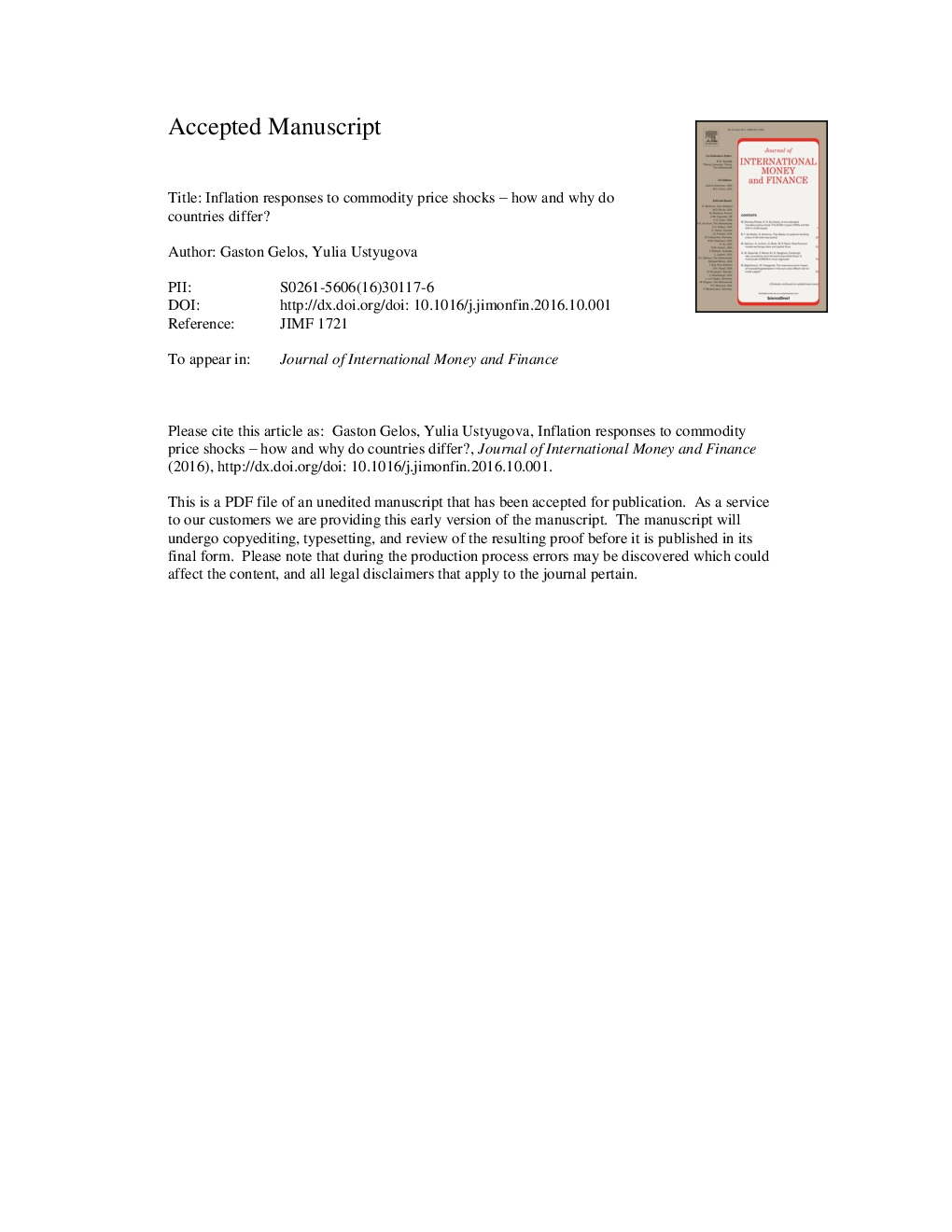| Article ID | Journal | Published Year | Pages | File Type |
|---|---|---|---|---|
| 5101193 | Journal of International Money and Finance | 2017 | 50 Pages |
Abstract
This paper relates the inflationary impact of commodity price shocks across countries to a broad range of structural characteristics and policy frameworks over the period 2001-2010, using several approaches. The analysis suggests that economies with higher food shares in CPI baskets, fuel intensities, and pre-existing inflation levels were more prone to experience sustained inflationary effects from commodity price shocks. Countries with more independent central banks and higher governance scores seem to have contained the impact of these shocks better. The effect of the presence of inflation targeting regimes, however, appears modest and not evident during the 2008 food price shock. The evidence suggests that trade openness, financial development, dollarization, and labor market flexibility do not significantly influence the way in which domestic inflation responds to international commodity price shocks.
Related Topics
Social Sciences and Humanities
Economics, Econometrics and Finance
Economics and Econometrics
Authors
Gaston Gelos, Yulia Ustyugova,
